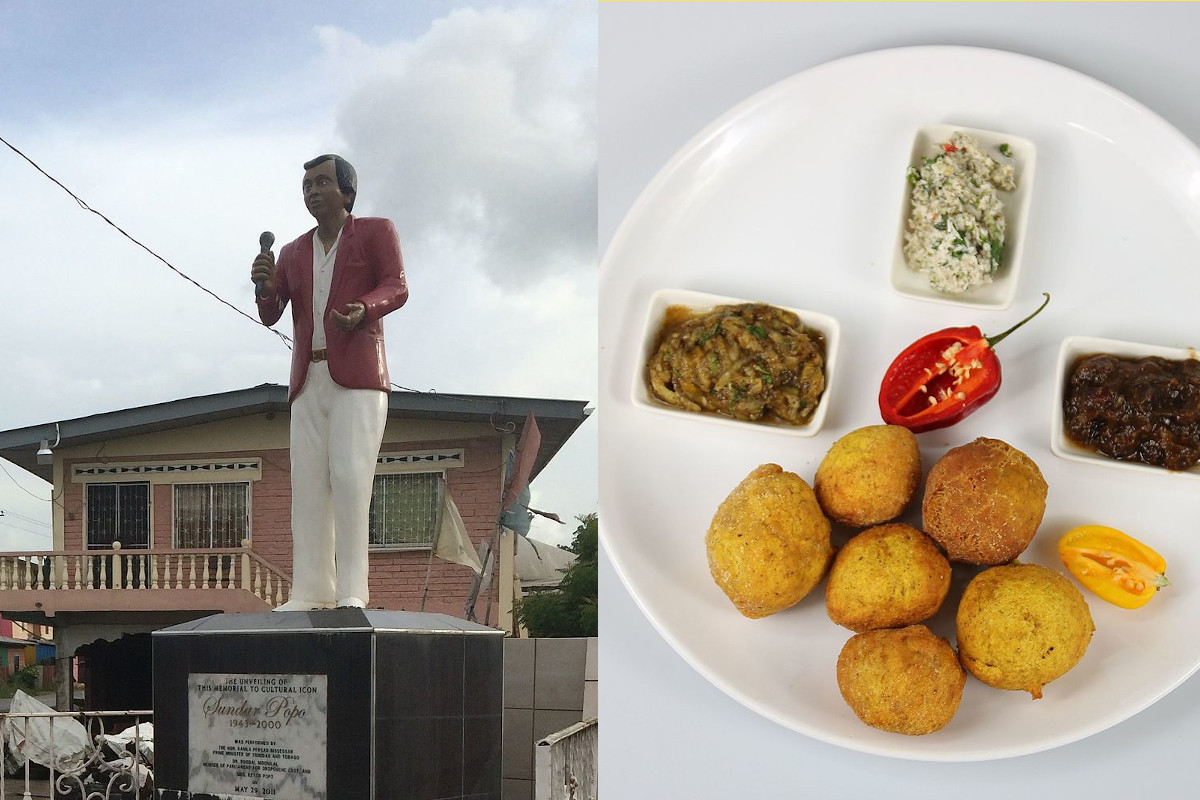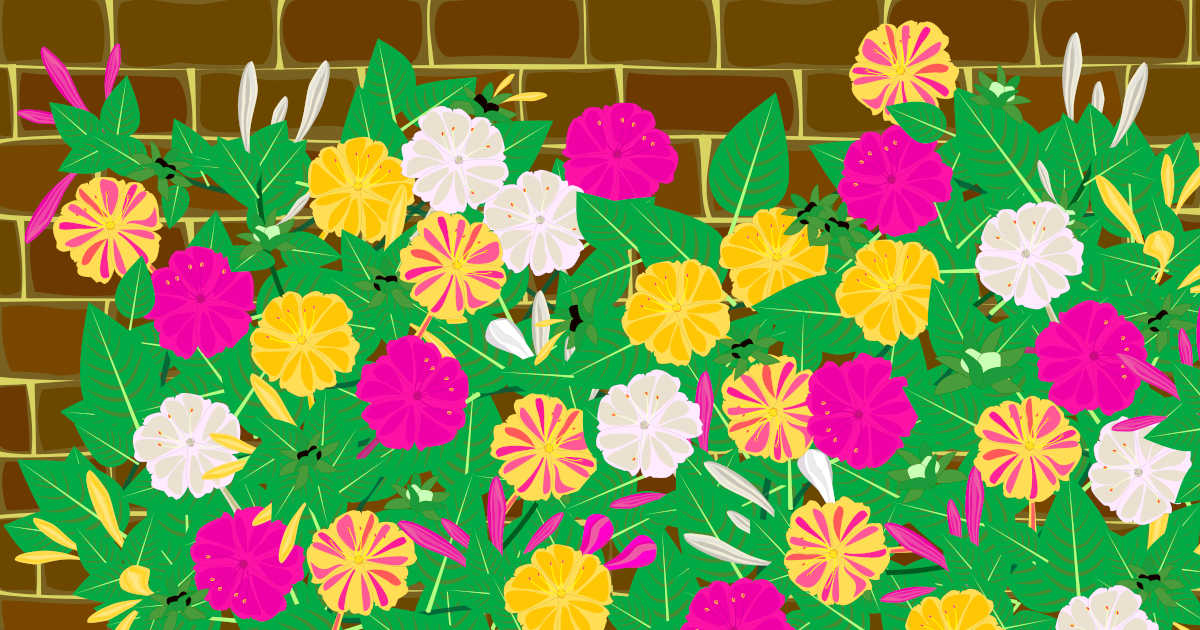
Sometimes, my non-Bengali schoolmates mention that even though they remember how to read Bengali, they avoid reading/ cannot read my posts because , naturally, it becomes a lengthy exercise. So I decided to write this post in English. The festive season has just begun, and this post is about a common memory associated with festivities from the yesteryear that I want to share with them all. Maybe many of them are already aware of the piece of history I am about to share — yet, no harm in going through the same once more.
In the days we grew up in the cosmopolitan industrial townships of Rupnarainpur and Chittaranjan, smugly nestled in the far-west Bengal-Jharkhand border (erstwhile Bengal-Bihar border), no festivals or happy events would be complete without a set of popular, happening songs blaring through loudspeakers, shattering all sensibilities. One among them was 'Phulouri bina chutney kaise bani...'. Personally, I used to know and still remember only two lines of that song—
Kaise bani , Kaise bani, Kaise bani , Kaise bani
Phulouri bina chutney kaise bani...
There are a few more stanzas or verses, which i could not comprehend as a kid and possibly never wanted to comprehend much. Honestly, I understood not a single word of the 'Antara' (s) ( or the 'verse') that appeared one after another. After each two lines of an 'antara', this couplet would come back with its catchy tune. The song was rendered in a female voice, and though the music arrangement was sleek, modern and almost resembled disco, the language it was rendered in was not exactly the generic, polished 'Hindi' we were generally accustomed to.
In short, even after hearing it for a zillion times and watching people dancing to its tune during 'bhashaan', I never managed to mug up beyond those two lines.
This particular song did its round more than required in our family because once in a while we used to tease one of our little cousins by replacing her pet name with 'phulouri'—but it was a short-lived affair. As with everything else, this hit song gave way to newer melodies and retracted beyond some sepia curtain...until about a decade ago, it appeared almost in a cameo somewhere in 'Dabangg 2'. I was happily clueless about this until I was searching for the song on YouTube and Salman Khan's face appeared in the search results!
Meanwhile, may be about five years back—my brother introduced me to 'Chutney music'. Briefly explained, 'Chutney' is a fusion music incorporating Bhojpuri folk music, Caribbean Calypso and Soca. Lately, possibly Bollywood music also inspires Chutney to some extent. It was then that I heard the names of Kanchan and Babla for the first time. I very much liked the first 'Chutney' song I heard — 'Suriname Holland Guyana' by Kanchan. It's first few line goes:
Suriname se nikle, Holland aaye
Guyana se nikle, Amrika aaye
Dhire dhire kuchh to karke kaam jamayenge
Day and night mehnat karke paisa kamayenge
This mixed language lyric with a peppy tune made me wonder about the connections between Suriname, Guyana, Holland and the Hindi language. A little bit of exploration in the past revealed the universal story of humankind's tenacity and urge to survive and flourish even amidst the most desperate of situations.
I had no idea about the arduous journey of 'Indentured Labourers' from India. To think straight, there was no reason to explore — unless it was part of some examination syllabus— why in the late nineteenth century, a large group of people from India would decide to go and settle down in countries named Trinidad & Tobago, Suriname or Guyana in the opposite hemisphere. Apart from having a few distant relatives settled in the USA, my imagination about people with Indian roots on the other side of the globe stopped at V. S. Naipaul and his 'A House for Mr. Biswas' , and a Caribbean cricketer named S. Chanderpaul, whose Indian origin used to be mentioned during cricket matches aired on the television during my childhood days. While trying to remember his name, I found on the net that there have been many more Caribbean cricketers of Indian origin; I remembered Chanderpaul's name because my father had mentioned about his Indian linkage at some point of time.
Suriname, a small country in the north-eastern fringes of the continent of South America, was — almost as expected— a Dutch colony in the 16th century. Suriname was famous for its sugarcane plantations and the sugar industry, driven by the African slaves. About two centuries later, the Dutch decided to abolish slavery. It was around the same time when slavery was being abolished from the USA too. After the official abolition of slavery, the erstwhile slaves did not want to work in the plantations and factories against the poor payments they were being offered. So, the Dutch government came in contract with the East India Company to get cheap labourers from India. Meanwhile, in India, especially in places like Bihar and Uttar Pradesh, very poor farmers were struggling against the various cruelties exercised by the British government, including heavy taxation. They were lured with the dreams of a better future and hired by recruiters know as 'Arkatiyas' They came into a five year contract to work as 'coolies' in the sugarcane farms of Suriname and elsewhere. Once their passage money was paid via the labour provided for a stipulated period of time, they were supposed to become free and return home with a small fortune.
The reality, however was totally different. The men and women who survived (many of them died on the way) the difficult journey for months over oceans and seas, reached a completely foreign land to realise they had been badly cheated. Their living conditions were no better than the erstwhile sugar-slaves and their weekly payments were regularly delayed. The first ship carrying such men and women,who were allowed to carry limited number of clothes and the very basic supplies, started from the Suriname Ghat — located somewhere alongside modern day Metiabruz— on the Hooghly river on February 26, 1873. The following years saw many more such ships travelling with more and more people hoping for a better life. The 'indentured labour' system was finally abolished from Suriname in 1917. However, the majority of those who went to Suriname — and other such countries with similar dreams — never came back to India.Those who went to Suriname, actually migrated to Holland after the former became officially independent in 1975. That bit of information actually joins the dots and provides answer to the query that had appeared in my mind when I heard a 'Hindi' song speaking of people leaving Suriname and reaching Holland seeking job and livelihood.
Those ancestors, who gathered so much courage to embark into a voyage to a totally unknown country, did dream to settle down and flourish in life. Naturally, music became a source of emotional sustenance. Songs related to marriage, sung mostly by women and prayer songs for temples were practised from the initial days in the new land. With time, Indian instruments like the dholak and the harmonium as well as Indian folk tunes mixed and merged with their African and Caribbean counterparts, to give birth to a new form of music. In the early twentieth century, a new breed of singers and musicians emerged among the .Indian population of the Caribbean— who created a new form of Diaspora music mixing Caribbean English and Bhojpuri, or to be specific Caribbean Hindustani. This new form of music gradually came to be known as 'Chutney' music. What a wonderful coinage for a genre that offers a true fusion of tastes!
The very first superstar of 'Chutney' music was Sundar Popo. He was raised in Trinidad and Tobago in a musically inclined Indian family. Regarded as the father of Chutney music, Sundar Popo is a cultural icon in Trinidad and Tobago. ' Phulouri bina chutney' was originally written and sung by him, possibly in 1976.
Sometime in the early 80s, the song was remixed and presented by the husband-wife duo from India — Babla and Kanchan. Babla Shah was the younger brother of music director duo Kalyanji - Anandji. He was a talented musician and had worked on several popular title tracks of Hindi movies and other music arrangement projects. Kanchan was a talented singer, and even though she gave some superhit songs for a few Hindi films, her career as a hindi film playback singer did not flourish much for various reasons. Along with Babla Shah, she focused on performing Chutney and gradually the duo emerged as distinguished Chutney performers and have travelled the world,singing both remixes of old hits and creating new ones.
The slightly rustic, feminine rendition of 'phulouri bina chutney kaise bani' that pepped up our collective soundscape through the ever-streching 'puja vacations' was by Kanchan Shah.
It is difficult to explain or relate to the almost childish lines and funnily unrelatable lyrics of the 'antara'(s) of this song. The Internet, my source of information does not enlighten us on the same. Maybe, mindless fun was what the original lyricist actually aimed at. What is interesting however, is the term 'Phulouri'. A peep into Caribbean food vlogs made me realise that the recipe of the popular all-season caribbean snack 'Pholourie / Phelourie/ phulourie/ phoulourie' , the distant cousin of our very own street-snack 'Pholoori' — has not changed much over the last few centuries. The age-old recipe that travelled with our ancestors, have managed to retain its originality in the usage of the basic ingredients while being widely influenced by flavours and aromas.
I wish to clarify that I collected all the information from various news portals and related websites to put them together in this piece of writing. There are overwhelming information available online on the indentured labourers, the Indian diaspora in the Caribbeans, the Chutney genre and the associated artists. It was not my aim to impossibly fit all of that within one post. Also, I am neither a music cognoscente per se, so I may have used incorrect terminologies in describing the song. I have just tried to share my excitement and touch on the important connecting points, to sketch an outline of the journey of a song that was so much part of our childhood and growing-up days.
Not every song connects distant parts of the world in such incredible ways! Not every song has such a tale, rather so many tales to share- tales of hope and resilience, tales of survival, tales of the search for and the development of one's unique identity, tales of revisiting your roots in new avatars once in a while and feeling the warm sorrow of lost connections.
* The link below is that of the original song by Sundar Popo.
*Photo credit: Wikipedia
Left: a statue of Sundar Popo in the town of Debe, Trinidad & Tobago
Right: Pholourie & Chutney!
Facebook link:https://www.facebook.com/mahasweta.ray/posts/10160401528662494
